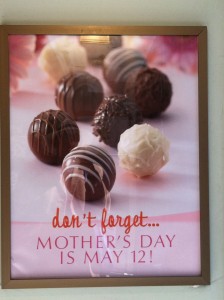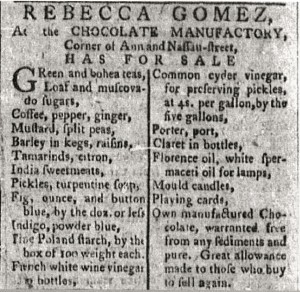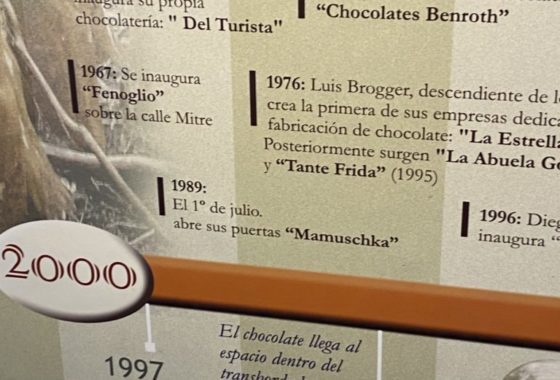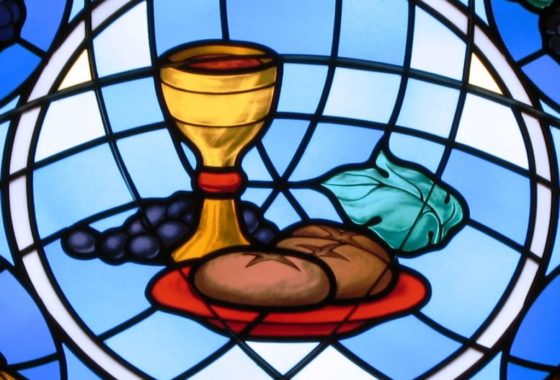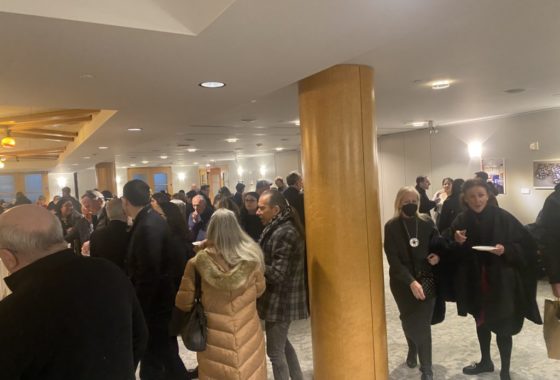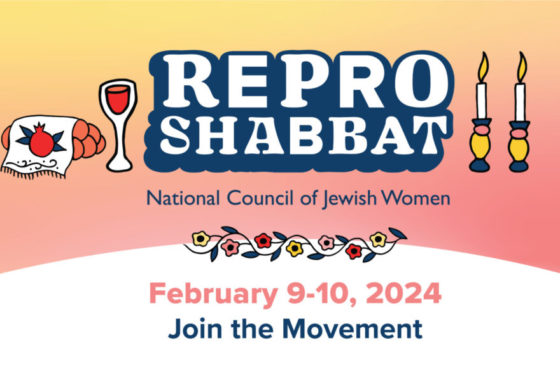A Jewish Matriarch of American Chocolate Making
Rebecca, along with her husband, her brother-in-law, her son and her nephew had an appetite for the chocolate business in New York City. After the death of her husband, Rebecca ran the business and advertised her chocolate delectable in the local papers, “Rebecca Gomez at the Chocolate Manufactory Corner of Ann and Nassau-Street.” While there were about a dozen other women selling chocolate in the Colonies, Rebecca uniquely manufactured it as well.
Rebecca’s chocolate also had yichus in the Jewish community. Her extended Gomez clan led the Sephardi and civic community of New York. At New York’s Congregation Shearith Israel, they enjoyed the most prestigious seats. The affluent Gomez family’s donation was the highest of any single contribution. The vast majority of the twenty-five Sephardi members of the leadership committee of Shearith Israel were Gomezes. The prestigious northwest gallery of the synagogue’s women’s section, called the banco, was reserved for the Gomez women, symbolizing their wealth and stature.
In those days chocolate was imbibed as a beverage, made from what were called “cocoa nuts” or “chocolate nutts” (cocoa beans). These dressed up a breakfast or a supper and sometimes comprised the entire meal. As a pareve (without milk) product, it could accompany any meal. Preparing chocolate required a lot of hand or primitive machine labor and was extremely time consuming. They or their servants likely roasted cocoa beans on an open fire, shelled them by hand, and then melted the chocolate on stone, similar to a metate. They may have used a hand snuff mill to grind the beans. This resulted in inexpensive, granular chocolate balls that were stored until mixed with hot water for yummy chocolate drink. There were no chocolate ice creams, chocolate candy bars, chocolate truffles, chocolate cakes or chocolate chip cookies in those days. The proximity of the colonies to cacao bean sources in Curacao and Central America kept prices reasonable. This meant that Colonial America had more chocolate per capita than Europe. Our Colonial matriarch, Rebecca, contributed to the popularity and availability of chocolate indulgences in her day.
From Rebecca Gomez to our beloved mothers today, we celebrate with the blessings of chocolate.
Recent Posts
-
On the Chocolate Trail in Bariloche, Argentina
In March, Mark and I finally extended our chocolate trail explorations in celebration of our special anniversary to Bariloche…via Miami, Buenos Aires, Ushuaia, Antarctica, and Buenos Aires again. There were international flights, a cruise, a couple of domestic flights to get there. All of the travel was amazing, but Bariloche, sometimes called the chocolate capital
Read more › -
Sunday Yeast Polemics: On the Bread Trail
Leavened bread or not? While some of us may think of Passover, the question applied to Eucharistic bread and created significant division in the early Christian Church. The leavened bread for Sunday use was often baked at home by women. Over time, preferences shifted to clergy, church-produced, breads… and, the Eastern Orthodox Church preferred a
Read more › -
Sweet Treat: Chocolate and the Making of American Jews
You may wonder: how did chocolate help define American Jews? Through chocolate, we see that Jews were part of America since its earliest days. Well, since 1701 at least, Jews in the Colonies made part of their living through chocolate. Several Sephardim, leaders of their New York and Newport Jewish and secular communities, participated in
Read more › -
How About Some Uterus Challah?
When Logan Zinman Gerber felt enraged about the loss of reproductive rights in the U.S., she baked challah. Not any challah. She shaped it into a uterus. It wasn’t long after the birth of her daughter that Gerber, a longtime challah baker and staff member of the Religious Action Center of the Reform movement, considered
Read more ›
Some Previous Posts
(in alphabetical order)
- "Boston Chocolate Party" Q&As with Deborah Kalb
- 2022 Media for The "Boston Chocolate Party"
- A Manhattan synagogue explores the rich, surprising history of Jews and chocolate
- About Rabbi Deborah Prinz
- Baking Prayers into High Holiday Breads
- Boston Chocolate Party
- Digging into Biblical Breads
- Exhibit Opens! Sweet Treat! Chocolate & the Making of American Jews
- For the Easiest Hanukah Doughnuts Ever
- Forthcoming! On the Bread Trail
- Funny Faced Purim Pastries
- Good Riddance Chameitz or, The Polemics of Passover's Leaven
- How About Some Uterus Challah?
- Injera*
- Jewish Heritage Month: Baseball & Chocolate!
- Matzah - But, the Dough Did Rise!
- Plan a Choco-Hanukkah Party: 250th Anniversary Tea Party
- Prayers Into Breads
- To Shape Dough: A Trio of Techniques
Archives
2025
▾- All
2024
▾- January
- February
- March
- May
- July
- All
2023
▾- March
- April
- May
- June
- August
- November
- December
- All
2022
▾- February
- April
- November
- December
- All
2021
▾- March
- April
- October
- November
- All
2020
▾- April
- May
- June
- October
- December
- All
2019
▾- January
- February
- April
- May
- July
- August
- September
- October
- December
- All
2018
▾- February
- March
- April
- May
- July
- September
- October
- November
- December
- All
2017
▾- January
- February
- March
- July
- September
- October
- November
- December
- All
2016
▾- January
- February
- March
- May
- July
- August
- October
- November
- All
2015
▾- January
- February
- March
- May
- June
- July
- September
- November
- All
2014
▾- February
- April
- May
- June
- August
- September
- November
- All
2013
▾- March
- April
- May
- June
- July
- September
- November
- All
2012
▾- January
- February
- March
- April
- September
- October
- November
- December
- All
2011
▾- April
- July
- August
- October
- November
- All
2010
▾- January
- February
- April
- July
- August
- September
- October
- All
2009
▾- January
- June
- July
- August
- October
- All
2008
▾- August
- September
- October
- November
- All
2007
▾- January
- June
- July
- All
2006
▾- November
- December
- All
